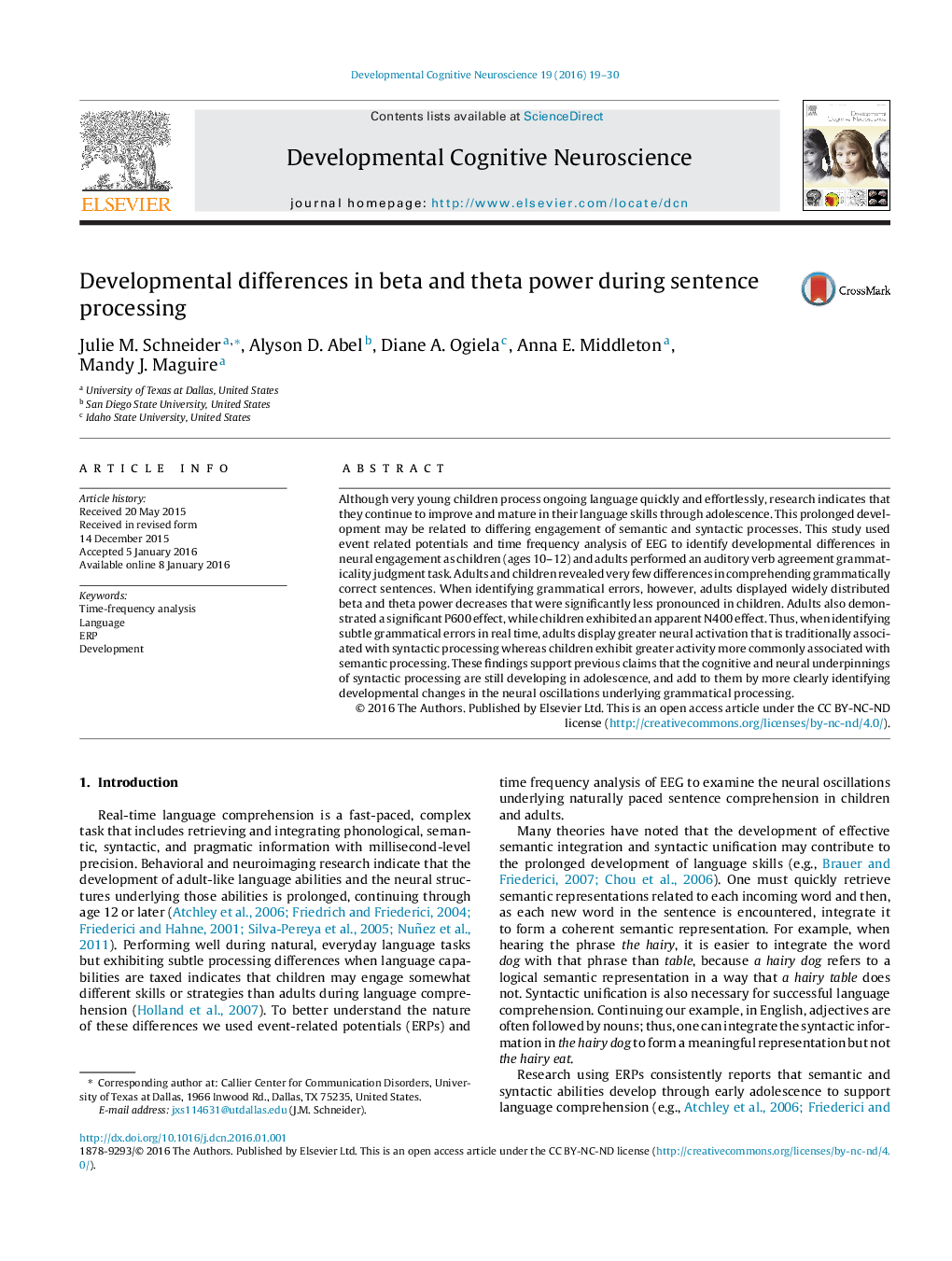| Article ID | Journal | Published Year | Pages | File Type |
|---|---|---|---|---|
| 4316431 | Developmental Cognitive Neuroscience | 2016 | 12 Pages |
•Changes in ERPs and oscillatory dynamic occur during auditory sentence processing.•Adults are significantly better at identifying syntactic errors compared to children.•Adults display a significant P600 effect and theta/beta power decrease.•Children display a significant N400 effect and smaller decrease in theta/beta power.•These findings suggest syntactic processing skills are still developing by age 12.
Although very young children process ongoing language quickly and effortlessly, research indicates that they continue to improve and mature in their language skills through adolescence. This prolonged development may be related to differing engagement of semantic and syntactic processes. This study used event related potentials and time frequency analysis of EEG to identify developmental differences in neural engagement as children (ages 10–12) and adults performed an auditory verb agreement grammaticality judgment task. Adults and children revealed very few differences in comprehending grammatically correct sentences. When identifying grammatical errors, however, adults displayed widely distributed beta and theta power decreases that were significantly less pronounced in children. Adults also demonstrated a significant P600 effect, while children exhibited an apparent N400 effect. Thus, when identifying subtle grammatical errors in real time, adults display greater neural activation that is traditionally associated with syntactic processing whereas children exhibit greater activity more commonly associated with semantic processing. These findings support previous claims that the cognitive and neural underpinnings of syntactic processing are still developing in adolescence, and add to them by more clearly identifying developmental changes in the neural oscillations underlying grammatical processing.
